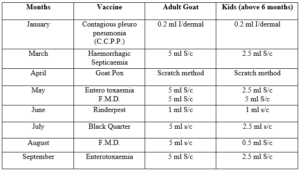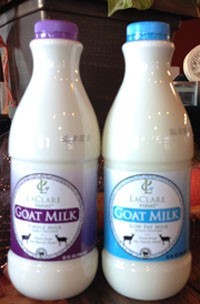Opportunity of Self Employment in Dairy Goat Farming with special reference to the North-Eastern Region of India
Introduction:
Goat production is the main component of the farming system and an important source of income for poor villagers. Goat produces milk, meat, fiber, skin etc. Goats are raised for meat production, but they also produce milk to meet the family requirement. Commercial goat farming is defined as goat rearing under intensive and semi-intensive systems for commercial production. Commercial goat farming has emerged as important drivers of agricultural growth in India (Prasad, 2018) [7] . Commercial goat farming has a huge opportunity in rural development as goat has the potential for export of products, capital storage, household income and employment. The goat rearing using improved management practices undertaken for maximization of returns from the enterprise was considered ‘commercial goat farming’ .Semi intensive system is a combination of extensive and intensive systems in which limited free-range grazing is allowed with stall feeding. Goats are allowed to graze on the common property resources or cultivable/fallow land for 4-6 hours/day and are kept in stalls where they are offered tree leaves, dry fodder, and concentrate mixture. Intensive system goats are continuously kept under housing in confinement with limited access to land (zero-grazing system) and provided with complete stall feeding on cultivated fodders, crop residues, and concentrates or compounded feeds.
The goat is known as the ‘poor man’s cow’ in India because of its significant contribution to the economy of the poor. They not only provide nutritious and digestible milk but also a common source of income for poor, landless, small-land farmers. Being small animals, goats can be easily handled by women and children. rearing, feeding, milking, housing and caring for goats does not require much-advanced equipment and hard work. Money investments and food costs are also very low. Goat has early sexual maturity, a higher prolificacy rate and easily marketing with profit. Goats can be successfully farmed in areas where fodder is limited and milking cows do not grow well. A return of up to 50% money is possible in goat farming. Small land farmers and landless labour that are not suitable for the rearing of other species such as cattle, buffalo but goat is the best option for them four goats can be kept cheap as one traditional cow.
In rural areas, goat farming plays an important role in providing self employment to people. Goat rearing turned out to be a very good source of income for the landless as well as the landowners. The wide variety of genetic diversity of Indian goat breeds enables them to survive under stressful natural conditions, including high disease, malnutrition and high temperatures. Goat farmers can get the most profit by selling pure breeds of goats and special occasions such as Eid. Rural unemployment people take training about scientific farming of goats, also develop their management skills for proper housing, feeding including fodder development for goats and their conservation, proper breeding skills, disease control, prevention, value addition of goat milk and meat products. Goat insurance is the best protection against mortality risk, especially for small producers of farmers. Encourage goat farmers to switch from extensive goat farming to semi-extensive systems. (Khillare and Kaushal, 2021).
Risk management and insurance coverage, backward and forward linkages to start goat farm.
- Common conditions
- Goat insurance covers sudden and unexpected death of animals. The common conditions are: flood, fire, lightning, explosion, storm, typhoon, hurricane, riots, surgical operations.
- Earthquake and landslide are provided
- Animals are identified by ear tags of small brass buttons
- The bank/financial institution providing insurance for goat farming
- SBI General Insurance Company Limited with a total capital of about 74%
- New India Insurance Company Limited
- The Oriental Insurance Company Limited
- United India Insurance Company
- IDBI Bank Limited
Premium rates of basic is 4% gross per annum. (Rs. 30/- per policy)
- Goat breeding policy
The main motto is to improve growth, reproduction efficiency, quality, and quantity of meat and wool and to reduce mortality considering the cross-breeding with high-yielding exotic and native breeds of goats.
- Goat Sukshma Bima Policy: It includes accidents as discussed above or any acceptable diseases such as rinderpest, black quarter, haemorrhage died within any geographical area. Septicemia, Antrax, FMD, goat pox fall under the policy.
- Veterinary Examinations for identification marks, animal health, and immunizations can be obtained.
- The company will bear the tagging charges which do not exceed Rs. 1/- per animal at the time of approval of the proposal.
- The following routine vaccination schedule should be adopted:

Compiled & Shared by- This paper is a compilation of groupwork provided by the Team, LITD (Livestock Institute of Training & Development)
Image-Courtesy-Google
Reference-On Request


